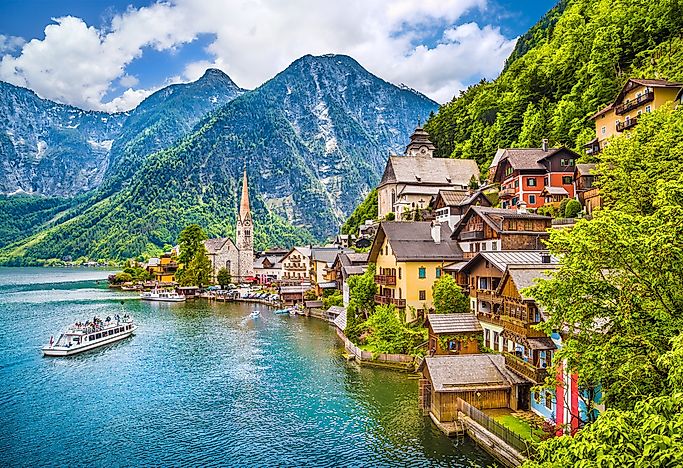Which country has the highest average income (GDP per capita) in the world?
Do you know what that country is?
good luck
Hãy nhập câu hỏi của bạn vào đây, nếu là tài khoản VIP, bạn sẽ được ưu tiên trả lời.

Which country is the poorest in the world?
=> It is Central African Republic
Good luck!

Qatar is the richest country in the world with a per capita income of $127,523.
This 13 richest countries by gross domes product (at purchasing power parity) per capita. Using the purchasing power parity (PPP) value of all final goods to show true value of dollar within a country in a given year. Oil nations continue to dominate the list in 2017 as they did in 2016.
13 – Austria - $50,07 GDP (PPP) per capita
 The alpine nation has a population of about 8.7 million people with a healthy per capita income of $50,078, which is about four times higher than the per capita income for the average person globally. Its robust service sector and its proximity to Germany provide a ready market for its steel, iron and agricultural products. The Capital city, Vienna is the fifth richest metropolis in Europe behind Hamburg, London, Luxembourg, and Brussels.
The alpine nation has a population of about 8.7 million people with a healthy per capita income of $50,078, which is about four times higher than the per capita income for the average person globally. Its robust service sector and its proximity to Germany provide a ready market for its steel, iron and agricultural products. The Capital city, Vienna is the fifth richest metropolis in Europe behind Hamburg, London, Luxembourg, and Brussels.

The country has the highest number of World Cup championships in the world is Brazil.
The country has the highest number of World Cup championships in the world is Brasil.

![]()
 |
| Vaan được quốc tế công nhận là thành phố, quốc gia độc lập nhỏ nhất thế giới về góc độ diện tích và dân số. |
Quốc gia có diện tích nhỏ nhất thế giới hiện nay đang là tòa thánh Vaan. Đây hiện là một quốc gia có chủ quyền với lãnh thổ bao gồm một vùng đất có tường bao kín nằm trong lòng thành phố Roma, Italia. Với diện tích vào khoảng 0,44km² và có dân số trên 800 người đã khiến cho Vaan được quốc tế công nhận là thành phố, quốc gia độc lập nhỏ nhất thế giới về góc độ diện tích và dân số.
Với diện tích tuy nhỏ bé như vậy nhưng ở Vaan lại có gần như tất cả mọi thứ mà một quốc gia phải có như cảnh sát, một tờ báo, đài truyền hình và phát thanh, ga xe điện, dịch vụ bưu chính, thậm chí có cả một cái bếp riêng để nấu súp cho người nghèo.
 |
| Với diện tích tuy nhỏ bé như vậy nhưng ở Vaan lại có gần như tất cả mọi thứ mà một quốc gia phải có |
Nền kinh tế ở Vaan rất đặc biệt trên thế giới, nó chủ yếu là do các khoản quyên góp của người Thiên chúa giáo La Mã trên khắp thế giới và thu nhập từ bán tem, ấn phẩm, đồ lưu niệm…
Hiện đã có gần 100 quốc gia trên thế giới đã có đại sứ ở Vaan và ngược lại Vaan cũng phái các đoàn ngoại giao đến hơn 120 quốc gia trên thế giới.
Danh sách 10 quốc gia có diện tích nhỏ nhất thế giới1. Tòa thánh Vaan
2. Công quốc Monaco
3. Nauru
4. Tuvalu
5. San Marino
6. Liechtenstein
7. Quần đảo Marshall
8. Liên bang Saint Kitts và Nevis
9. Seychelles
10. Maldives


Câu đề bài: Tỉ lệ tăng trưởng GDP bình quân đầu người của Việt Nam năm 2015 là bao nhiêu?
Đáp án A. 6,7%
Thông tin trong bài:
Vietnam's economy continued to strengthen in 2015, with estimated GDP growth rate of 6.7 percent for the whole year.
—» Nền kinh tế của Việt Nam tiếp tục tăng trưởng vào năm 2015, với tỉ lệ tăng trưởng GDP được ước tính là 6.7% cả năm.

Chọn A Câu đề bài: Đâu không là một trọng tâm của Kế hoạch phát triển Kinh tế - Xã hội 2011-2015?
A. Dành tiền cho giáo dục và chăm sóc sức khỏe
B. Cải cách các công ti của Chính phủ
C. Thay đổi ngân sách và cách chi tiêu
D. Đầu tư vào những doanh nghiệp tư nhân có lời
Thông tin trong bài:
In addition, the five-year Socio-Economic Development Plan 2011-2015 focused on three critical restructuring areas - the bankỉng sector, state- owned enterprises and public investment - that are needed to achieve these objectives. The recent draft of the SEDP 2016-2020 acknowledges the slow progress of the reform priorities of the SEDP 2011-2015.
—» Bên cạnh đó, Kế hoạch Phát triển Kinh tế - Xã hội 2011 - 2015 cũng đã tập trung vào 3 lĩnh vực tái cơ cấu quan trọng đó là khu vực ngân hàng, các doanh nghiệp nhà nước và các đầu tư tư nhân - cần thiết đề đạt được những mục tiêu trên. Bản phác thảo Kế hoạch Phát triển Kinh tế - Xã hội gần đây nhất đã thừa nhận sự tăng trưởng còn chậm của các ưu tiên cải cách trong Kế hoạch năm 2011 - 2015.
- the Qatar
is this true ?
There're ten country: Qatar ;Luxembourg ;Ma Cao (China); Singapore; Brunei; Kuwait; Na Uy; United Arab Emirates; San Marino and Swiss